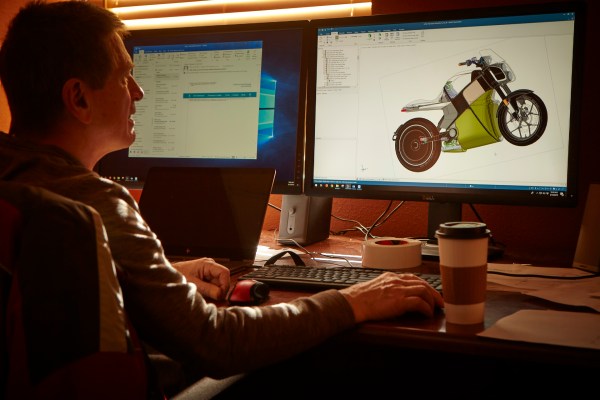[ad_1]

The USA might be the land of the automobile, with its grid-oriented cities, wide roads and interstates rolling off into the horizon. But cities that were not built for cars have narrow, winding and possibly cobbled streets without many parking options, and you’ll find that mopeds and small-engined bikes of various stripes are a far more common sight in these cities than cars. They are cheap to run, easy to maintain, and relatively simple to learn to ride. Mostly, they’re not about recreation, but about transportation and business.
Back when I lived in London, a motorcycle was my primary mode of transport. I’ve whizzed around Hanoi on a moped. Bangkok, Fes, Paris, Rome: They’re filled with mopeds and motorcycles. But what’s going to happen to this mode of transport as we shift away from internal combustion engines and toward electrification?
I spoke to motorcycle legend Erik Buell to get his vision for what the future holds. A motorcycle racing champion, engineer, and founder of the Buell Motorcycle Company, Buell helps the Fuell company dream up what’s next — including the recently launched, $10,695 Fuell Fllow.
Above: Erik Buell talking about the Fuell Fllow.
The future of mopeds and motorcycles is electric, Buell says. In fact, he sees mopeds and motorcycles playing an even greater role in transportation generally.
“A bunch of mayors from cities all across Europe are standing up and saying they’re going to ban internal combustion for their cities,” Buell says, highlighting what is driving the change. “It’s not going to happen next year, but it’s going to happen soon.”
Indeed, in Paris, home to at least half a million mopeds and motorcycles, daily parking charges have now been imposed on two-wheeled vehicles with engines. But not electric ones. So when it comes to electrifying motorcycles, light middleweight or moped-sized vehicles are the obvious starting point for Buell.
But that’s not only because of the sheer number of people who use them on a daily basis and how vital they are for keeping entire cities moving.
[ad_2]
Source link
